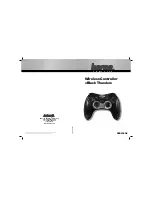
Technical
Manual
Switch
Actuators
AMI/AMS
MDT technologies GmbH •
51766 Engelskirchen • Papiermühle 1
Tel.: +49-2263-880 • Fax: +49-2263-4588 • [email protected] • www.mdt.de
29
4.4.4.1
Scene
programming
example
When
the
scene
function
is
activated
for
one
channel,
a
new
sub
menu
for
the
scene
of
this
channel
appears.
Up
to
8
scenes
can
be
adjusted
at
this
sub
menu.
Every
scene
gets
one
scene
number,
which
enables
the
calling
of
the
scene.
You
can
adjust
one
specific
state
for
every
scene.
So
you
can
switch
the
channel
off,
with
the
setting
“Off”
or
switch
the
channel
on
with
the
setting
“On”.
When
the
scene
is
called,
the
adjusted
parameterization
of
the
channel
is
kept
(e.g.
on
delay,
off
delay,
…).
To
note
at
the
scene
programming
is
that
if
you
want
to
call
2
or
more
channels
with
the
same
scene
number,
you
have
to
set
the
both
communication
objects
for
the
scenes
to
the
same
group
address.
By
sending
the
calling
value,
both
scenes
are
called.
Your
programming
can
become
much
clearer
if
you
divide
your
group
addresses
by
scene
numbers.
If
now
one
channel
shall
react
to
8
scenes,
you
will
have
to
connect
the
communication
object
for
the
scenes
to
8
group
addresses.
The
following
illustrations
shall
make
the
division
clearly:
Figure
18:
Programming
of
scenes
The
channels
A
and
D
shall
react
to
the
call
of
scene
A
and
scene
B.
So
they
are
connected
to
both
group
addresses.
Furthermore
you
can
save
scenes
at
the
according
scene
numbers.
For
that
you
have
to
activate
the
memory
function
at
a
channel
of
the
switch
actuator.
Now
you
can
call
scenes
by
a
binary
input
with
a
short
keystroke
and
save
scenes
by
a
long
keystroke.
The
adjusted
value
for
the
scene
is
overwritten
by
the
current
state
of
the
actuator,
when
you
save
the
scenes.
At
the
next
call
of
the
scene,
the
scene
will
be
called
with
the
new
value.
















































